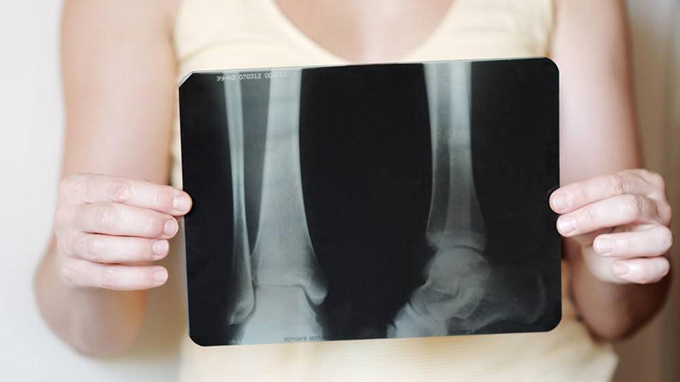Does the joint synovium also produce "hernia"?
In orthopedics clinics, chronic hip pain is very common. Most of the cases are hip osteoarthritis, hip synovitis, hip sprain, etc. However, for young patients with hip pain, due to different causes, The manifestations of the disease are very different. For example, if people who drink alcoholic beverages frequently suffer from hip pain and radiate to the inside of the thigh, the possibility of femoral head necrosis will increase significantly. For such patients, radiation examination will be performed first; for example, frequent exposure to hormones Although the treated patients may also suffer from necrosis of the femoral head, most of the patients are only hormone-induced transient osteoporosis. In this case, hip pain is not necessary to be too nervous.

A patient recently asked me questions, This patient is chronic hip pain, and took drugs many times over a three-year period, but the efficacy was always poor. The final MRI examination suggested hip synovial hernia and joint effusion. First of all, there may be patients who are puzzled by the synovial hernia of the hip-knowing inguinal hernia, hiatal hernia, and cerebral hernia, but what is the synovial hernia of the hip? In fact, in the orthopedics clinic, hip synovial hernia is not uncommon, and the performance is different, as follows:
1 Some hip synovial hernia protrudes outward through the joint capsule, or is relatively independent of the joint capsule and becomes a soft tissue mass; or there is still communication with the joint capsule, which expands and contracts with the change of body position. For this type of extra-articular mass, sometimes the diagnosis is relatively difficult, especially when the site is deep. The main clinical manifestations are the appearance of lumps next to the joints, which are asymptomatic at rest and do not hinder joint movement, but can induce pain and swelling after exercise or work.
2. Some hip synovial hernias form internal hernias, that is, synovial tissue hyperplasia invades the anterior cortex of the femoral neck, mostly round or irregular, generally less than 1 cm in diameter, and a few can gradually increase. MRI suggests T1 The small round lesions with low signal weighted image and high signal T2 weighted image often erode the upper femoral neck cortex, usually asymptomatic, and are benign lesions.
As for the effusion of the hip joint, in fact, no more attention is needed. After the joint is stimulated, the dynamic balance of the secretion-absorption of the joint fluid is broken, and the joint cavity effusion will occur. It is recommended that if there is a lot of effusion, acupuncture and aspiration can be taken, and the joint effusion should be tested and supplemented with drug treatment, which can alleviate it.
Dr. Konan recommends that the hip joint is an important weight-bearing joint of the human body, so it needs to be taken care of. The excessive load, accidental trauma and cold stimulation will affect the hip joint, thereby reducing people’s lives. quality. Daily exercise recommends free weight-bearing or light weight exercise, such as swimming, walking, radio gymnastics, etc. If you have hip pain, you must find a specialist doctor to see you in time. MRI can be regarded as a "golden indicator" for diagnosis, which can comprehensively reflect the health of the joint. In terms of treatment, since the conventional analgesics are only used to relieve the pain, it is recommended to use Chinese patent medicine as much as possible, mainly to promote blood circulation, reduce blood stasis, reduce swelling and fight inflammation.
Related Articles

- New treatment methods for spinal surgery
- There are often some elderly people in the clinic. Due to osteoporosis, fractures can occur due to small external forces. Especially osteoporotic spine compression fractures, this disease
- 2020-08-03

- Beware of the cold in the hot summer
- The title of this article may be surprising-since it is a hot summer, it is too late to get cold, how to get cold. In fact, in the hot summer, there are many patients in the orthopedic cli
- 2020-08-03

- How to protect the lumbar spine
- Our lumbar spine is very important to us, the first is to play a supporting role for our entire body, so that we can move freely. So how should we protect the lumbar spine in daily life? Th
- 2020-08-03

- Improve your bones before it starts to hurt
- Low back pain may be because of the posture of the body. Many people''s inexplicable back pain actually comes from incorrect posture.
- 2020-08-03

- What should I do if the old man falls
- It is winter, and it is inevitable that you will encounter a passerby falling, especially the elderly who accidentally fall, and you need some precautions when reaching out for help.
- 2020-08-03

- How to prevent osteoporosis scientific exercise
- Although exercise, calcium supplementation, and active vitamin D are complementary in the early prevention of osteoporosis, the important position of exercise should be emphasized, that is,
- 2020-08-03
